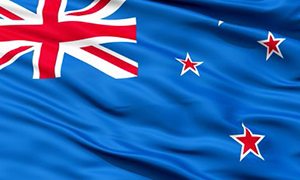New Zealand is viewed as a relatively simple jurisdiction for a QROPS, with good tax benefits and a well regulated system, however, QROPS in New Zealand have not been without complication.
For instance, when promises of 100% access were made and kept by certain providers in flagrante of the HMRC-imposed rules, which lead to some schemes being struck from the list of qualifying products.
Now that 100% access is back on the agenda and is set to be reintroduced to QROPS (legally this time), New Zealand finds itself in an advantageous position of having the necessary QROPS model in place to be able to handle the demand for this benefit should it arise.
New Zealand could certainly see its popularity increase on the back of the new legislation, so with that in mind, here is a quick guide to the country as a QROPS jurisdiction:
Regular New Zealand Superannuation Scheme
There are two types of QROPS in operation in New Zealand, the first is a Regular New Zealand Superannuation Scheme. These are pension models crafted for the international pension market that have applied to and successfully become a QROPS.
KiwiSaver Scheme
A KiwiSaver QROPS is on only open to residents of New Zealand or New Zealand passport holders living overseas. Therefore, only the following categories would ever qualify for KiwiSaver:
- A New Zealand national with a UK pension living anywhere other than the UK.
- A UK pension holder living in New Zealand (of any nationality).
While the KiwiSaver Scheme is revered nationally in New Zealand by financial services representatives, it can be fraught with problems. For instance, many of the payment structures of KiwiSavers could be deemed as unauthorised payments by HMRC. In particular, if the saver moves to a new country, a KiwiSaver Scheme cannot be transferred, it must be withdrawn in full. This has created problems in the past for savers deemed to have taken an unauthorised payment. Unauthorised payments result in penalties of up to 40% of the original withdrawal with an additional 15% charge if the payment was 25% or more of the entire fund.
Each KiwiSaver has different structuring, and there are those which do comply with HMRC, but in general there are too many grey areas across the sector which still need addressing to ensure compliance.
There are also some other disadvantages to the KiwiSaver option, for instance, the schemes do not offer sterling as a denomination, and many schemes are not actually administered as a QROPS. This means they are less likely to be up to date with the constantly changing rules often associated with the QROPS market.
In essence, there are few situations where an adviser would suggest the best course of action be a KiwiSaver as oppose to a New Zealand Superannuation, but clearly there is a market for them. Pension transfers are advised upon very much on a case-by-case basis, and should only be considered after an assessment of the individual’s circumstances.
While New Zealand does have a number of very reputable QROPS, there is also a variety of similarly effective jurisdictions which should be compared before making the switch.
To be placed in touch with an experienced QROPS adviser who can provide extensive insight and advice on New Zealand as a potential jurisdiction, contact us using the form here.
